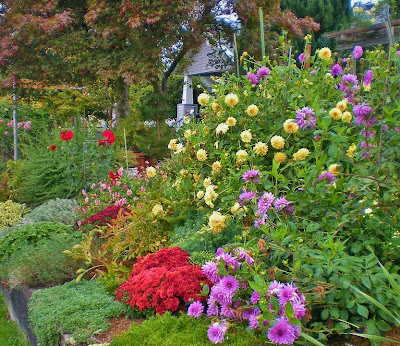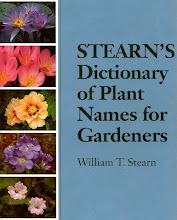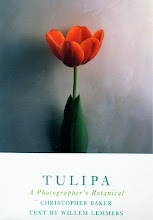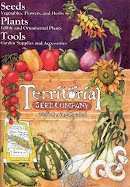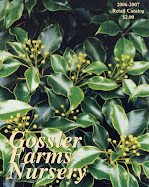Lavandula stoechas, Bergenia, Fuchsia magellanica, Mahonia aquifolium & Miscanthus sinensis in the
Sidewalk Garden on E Thomas Street October 2012
Vaccinium corymbosum, Mahonia aquifolium & Philadelphus in the
Sidewalk Garden on E Thomas Street October 2012
Vaccinium corymbosum, Mahonia aquifolium & Philadelphus in the
Sidewalk Garden on E Thomas Street October 2012
Berberis thunbergii & Nandina domestica in the Sidewalk Garden on E Thomas Street October 2012
Mahonia aquifolium in the Sidewalk Garden on E Thomas Street October 2012
This is one of the most exuberant sidewalk plantings I have encountered on the streets of Seattle. I really love it. The plants are great. They provide color throughout much of the year & fruit in the summer & fall. Many of the plants are repeated. But they are not repeated too often, which is the most disappointing aspect of landscape design in general. Some of the plants most used in this garden are Bergenia (Elephant Ears) Fuchsia magellanica (Hardy Fuchsia) Lavandula stoechas (Spanish Lavender) Mahonia aquifolium (Oregon Grape) Nandina domestica (Heavenly Bamboo) Philadelphus (Mock Orange) Vaccinium corymbosum (Blueberry) & Vaccinium ovatum (Evergreen Huckleberry). Blueberry is not a good choice for a sidewalk garden, because it does not tolerate dryness. Lavender is a very xeric plant & commonly used.
The major concern I have this garden is that it does not follow the guidelines set by the City of Seattle, which limits the height of plants in parking strips to 30 inches. This is important because taller plants block the visibility of cars on the street & can be dangerous for driving. I have often had problems while driving, when crossing streets, or turning onto them, because the plants were to tall to see approaching cars. I have come close to collision several times. This garden is on a street corner, which seems particularly unsafe. That said, I must admit that the plants in my own sidewalk garden (the Cascadia Garden) exceeded 30 inches. But that garden was mid-block, with no driveways on that side of the street. The city does not inspect sidewalk gardens, unless there is a complaint.
From the Seattle Department of Transportation: Planting strip treatments: Plants in planting strips vary greatly in their potential to provide optimum pedestrian and environmental benefits. Though SDOT allows the installation of grass the department encourages the installation of low (24-30 inches) shrubs, perennial or groundcover plantings that provide a superior degree of separation between the sidewalk and street at reduced maintenance costs.
The major concern I have this garden is that it does not follow the guidelines set by the City of Seattle, which limits the height of plants in parking strips to 30 inches. This is important because taller plants block the visibility of cars on the street & can be dangerous for driving. I have often had problems while driving, when crossing streets, or turning onto them, because the plants were to tall to see approaching cars. I have come close to collision several times. This garden is on a street corner, which seems particularly unsafe. That said, I must admit that the plants in my own sidewalk garden (the Cascadia Garden) exceeded 30 inches. But that garden was mid-block, with no driveways on that side of the street. The city does not inspect sidewalk gardens, unless there is a complaint.
From the Seattle Department of Transportation: Planting strip treatments: Plants in planting strips vary greatly in their potential to provide optimum pedestrian and environmental benefits. Though SDOT allows the installation of grass the department encourages the installation of low (24-30 inches) shrubs, perennial or groundcover plantings that provide a superior degree of separation between the sidewalk and street at reduced maintenance costs.











